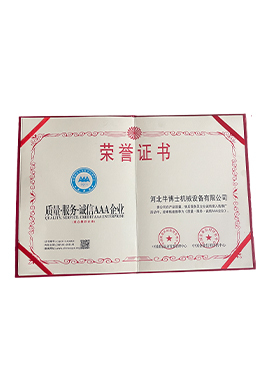Innovative Self-Propelled Swather for Efficient Crop Cutting and Harvesting Solutions
Understanding Self-Propelled Swathers An Essential Tool for Modern Agriculture
Self-propelled swathers have revolutionized the way farmers manage their crop harvesting processes. As an integral piece of machinery in the agricultural sector, these machines combine efficiency, versatility, and precision, making them indispensable for large-scale farming operations. This article delves into the mechanics, benefits, and applications of self-propelled swathers, illustrating their pivotal role in contemporary agriculture.
What is a Self-Propelled Swather?
A self-propelled swather is a type of agricultural machinery designed to cut and lay down crops in preparation for drying and harvest. Unlike conventional swathers that are towed by tractors, self-propelled units are equipped with their own engines and steering capabilities, allowing for enhanced maneuverability and operational speed. These machines are particularly effective for swathing crops like hay, barley, oats, and wheat, facilitating a more streamlined process in the field.
Mechanics of Self-Propelled Swathers
The design of a self-propelled swather is tailored for efficiency. It comprises several key components
1. Cutting Platform This is equipped with sharp blades that slice through the crops. The width of the cutting platform can vary, with options ranging from about 10 to 40 feet, enabling farmers to choose configurations that best suit their fields.
2. Conveyor System After cutting, crops are lifted and transported to the rear of the machine via an integrated conveyor system, laying them in neat rows for drying.
3. Hydraulic System Many advanced self-propelled swathers utilize hydraulic systems for lift and steering functions. This allows operators to adjust the height of the cutting platform based on crop density and terrain.
4. Operator Cabin Modern self-propelled swathers come equipped with comfortable cabins that include advanced controls and visibility features, enhancing the user experience. Many models now have GPS technology and automated guidance systems for precise operation.
Benefits of Using Self-Propelled Swathers
self propelled swather

The advantages of self-propelled swathers are manifold
- Increased Efficiency By combining multiple functions into a single machine, self-propelled swathers reduce the time and labor needed for swathing. This efficiency can lead to earlier harvests and better crop quality.
- Maneuverability Their self-propelled nature allows for easier navigation in tight spaces and uneven terrain, making them ideal for varied field conditions.
- Operational Comfort With operator-friendly designs, these machines minimize driver fatigue. This is particularly important during long working hours in peak harvest seasons.
- Versatility Self-propelled swathers can often be adjusted to handle different crop types and conditions, making them a versatile tool in any farmer’s arsenal.
Applications in Modern Agriculture
In today's ever-evolving agricultural landscape, self-propelled swathers play a crucial role in optimizing yield and quality. They are particularly valuable in regions where timely harvesting is critical to avoid adverse weather conditions that can damage crops. Additionally, they align with sustainable practices by reducing field operations, thereby minimizing soil compaction and preserving soil health.
Farmers looking to enhance their operations should consider investing in self-propelled swathers. With their advanced technology and proven efficiency, these machines not only simplify the harvesting process but also contribute to higher productivity and profitability.
Conclusion
Self-propelled swathers represent a significant advancement in farming technology, marking a shift towards more efficient, mechanized agricultural practices. As agricultural demands continue to grow, leveraging such machinery will be vital for farmers seeking to maximize their output and ensure sustainable practices. Understanding and adopting the use of self-propelled swathers can ultimately result in better yields, making it a worthwhile investment for the future of farming.
Latest news
-
When to Upgrade Your Old Forage HarvesterNewsJun.05,2025
-
One Forage Harvester for All Your NeedsNewsJun.05,2025
-
Mastering the Grass Reaper MachineNewsJun.05,2025
-
How Small Farms Make Full Use of Wheat ReaperNewsJun.05,2025
-
Harvesting Wheat the Easy Way: Use a Mini Tractor ReaperNewsJun.05,2025
-
Growing Demand for the Mini Tractor Reaper in AsiaNewsJun.05,2025







